Featured Articles
- 01 Computer Running Slow from Startup
- 02 Computer Running Slow After Startup
- 03 Computer Running Slow After Windows Update
- 04 Computer Running Slow While Transferring Files
- 05 Fix Lenovo Laptop Running Slow
- 06 Fix ASUS Laptop Running Slow
- 07 Windows 10 Suddenly Slow, Tips to Fix It
- 08 Windows 11 Slow? Improve Windows 11 Performance
It's being over 5 years since the publishing of Windows 10 Operating System. About 57% or even more people are using Windows 10 now around the world. However, the issue of computer slow after Windows 10 upgrade is still bothering worldwide users.
Don't worry if your computer slows down after Windows 10. On this page, you will learn:
Practical fixes with detailed tutorials will be presented here to guide you successfully speed up PC and optimize its performance with ease.
Issue - Computer Slow after Windows 10 Upgrade
"Hello, does upgrading to Windows 10 slow down my computer? I installed a new Windows 10 update on my computer today, and the process is quite smooth. No problem occurred. I felt so lucky.
Somehow, some apps and basic programs cannot respond soon when I click to use them. Instead of faster and improved performance, it seems that my computer slows down after Windows 10 update. Will Windows upgrade slow down the computer? How do I fix this issue?"
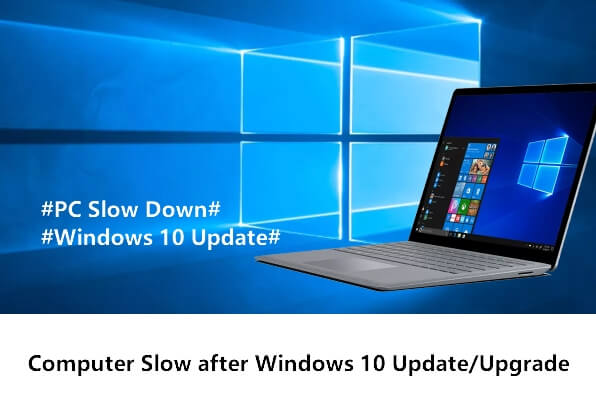
- Windows 10 20H2 October Update Rolls Out:
- Starting October 20, Microsoft is making the newest Windows 10 October Update with its new features available for mainstream users to install.
- If you haven't received it yet, you can manually download it from a variety of channels.
- To install the latest Windows 10 20H2 update, click to Download Latest Windows 10 Update from Microsoft official site.
According to the Microsoft community and some Windows forums, it's being a common issue that sometimes PC and computers may slow down after updating to the latest Windows 10. How come does this issue occur and how to resolve this problem so as to speed up the computer?
Continue reading and all your concerns will be addressed in the next two parts.
Causes - Why Is PC Slow after Windows 10 Update
Note that if your computer is running slow after installing Windows 10, it indeed takes some time for the computer to boot up and get used to the new Windows operating system. It's a normal process and all you need is just let it be.
But if you have boot up the computer several times, it's still extremely slow, like there is a lag out bug,
So what can you do if Windows 10 update slow down your PC? The first thing is to learn the reasons why your computer becoming slow. Here is a list of causes that will explain why your computer runs so slow:
- The system C drive is out of space - the main cause
- The system disk is with low disk
- The existing bugs in Windows 10 update slow down the computer
- Computer is too old to install new Windows 10 updates
So how to speed up your computer after upgrading to the latest Windows 10? Follow the offered solutions in the next part, you'll successfully speed up your PC with ease.
Solutions - Fix Windows 10 Update Slow Computer Issue, Speed Up PC
Here is a list of resolutions for you to apply and fix the Windows 10 slow down computer performance issue:
- #1. Extend System C Drive (Recommend to Speed Up PC )
- #2. Clear Windows Update Cache
- #3. Disk Cleanup
- #4. Optimize Disk Performance
- #5. Install the Latest Windows Update - New PCs after 2010
- #6. Perform System Restore, Revert to the Previous Version - Old Pcs before 2010
Note that some of the presented methods, especially Fix 2, 3, 6, may cause data loss, therefore, remember to back up your data on the C drive in advance. Let's start to optimize your computer performance now:
Method 1. Extend System C Drive to Speed Up Windows 10 PC
Windows 10 update slow issue can be fixed by extending C drive. Windows update often takes certain storage space on the system C drive. And if the system C drive is out of space after Windows 10 update, the computer running speed will slow down.
Extending the system C drive will effectively fix this issue. How to increase C drive? Professional partition manager software - EaseUS Partition Master is the easiest tool that you must try.
It enables you to enlarge C drive within only a few simple clicks. No data loss will occur and it even works even if you don't have unallocated space on the system disk.
Let's see how to extend the C drive on Windows 10:
Extend System C drive with unallocated space
- 1. Right-click on the System C: drive and select "Resize/Move".
- 2. Drag the system partition end into the unallocated space so to add it to the C: drive. And click "OK".
- 3. Click "Execute Task" and "Apply" to execute the operations and extend the C drive.
Actually, if this operation is taken before Windows 10 update, it works even better as you won't have the computer slow issue anymore.
Method 2. Delete Windows.old, Clear Windows Update Cache
When you install a new Windows update, a Windows.old folder will be automatically granted and saved in the C drive as a backup of the old Windows OS. This will take a high space on the system C drive. Also, the Windows update cache will also take a certain space in the system C drive.
So here are steps that you can follow to delete Windows.old folder and clear Windows update cache so as to speed up Windows 10 PC:
Delete Windows.old Folder
Step 1. Open Settings, go to System, and click "Storage"
Step 2. Click "Change how we free up space automatically" under Storage Sense.
Step 3. Check "Delete previous version of Windows" and click "Clean now".
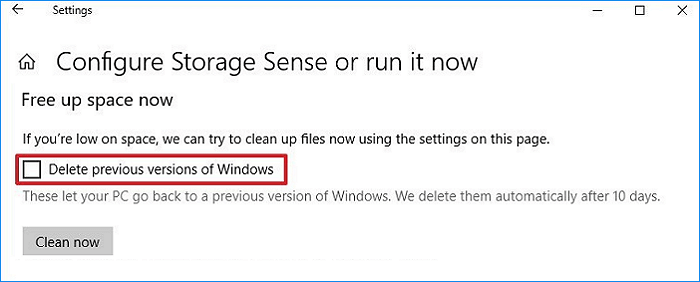
Clear Windows Update Cache
Step 1. Type services in Windows search, click "Services" to open it.
Step 2. Right-click on Windows Update, and select "Stop".
Step 3. Close the service window, press Windows + R keys to open the Run dialog.
Step 4. Type c:\windows\SoftwareDestribution and click "OK".
Step 5. Open the Download folder, select and delete all existing files in the folder.
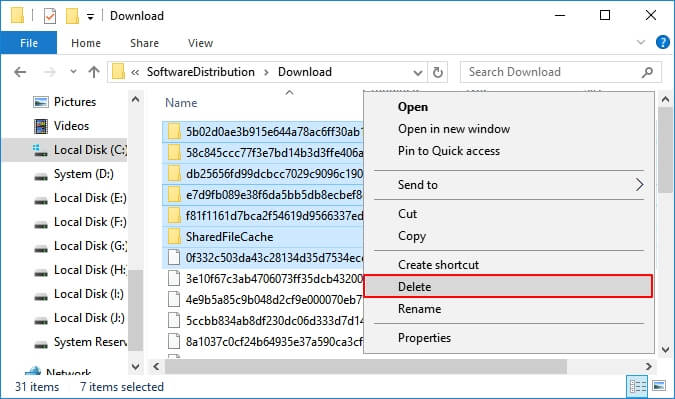
There, all the problems will be solved and you are good to go. Restart your PC, it will regain a fast running speed.
Method 3. Run Disk Cleanup to Speed Up PC
Step 1. Open Windows File Explorer, right-click on the C drive.
Step 2. Click "Properties" and go to the General tab.
Step 3. Click "Disk Cleanup", check the items that are taking huge space on C drive.
Step 4. Click "Clean up system files", and "OK" to complete.
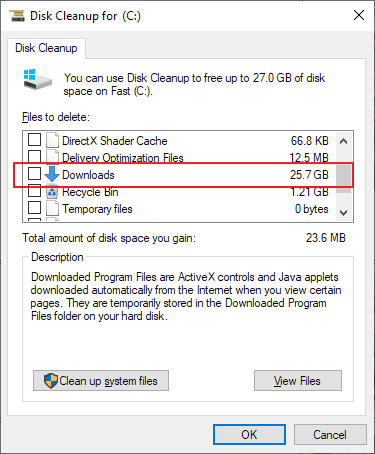
Repeat the process so as to cleaning other exiting partitions on your computer.
Method 4. Optimize Disk Performance
Using the Windows built-in tool to optimize disk performance may also help to improve computer speed at a certain extend. Here are the steps to optimize your disk:
Step 1. Open Windows Device Manager, expand Disk drives.
Step 2. Right-click on the system disk and select "Properties".
Step 3. Go to the Toos tab, click "Optimize" under Optimize and defragment drive.
Step 4. Select the System C drive and click "Optimize".
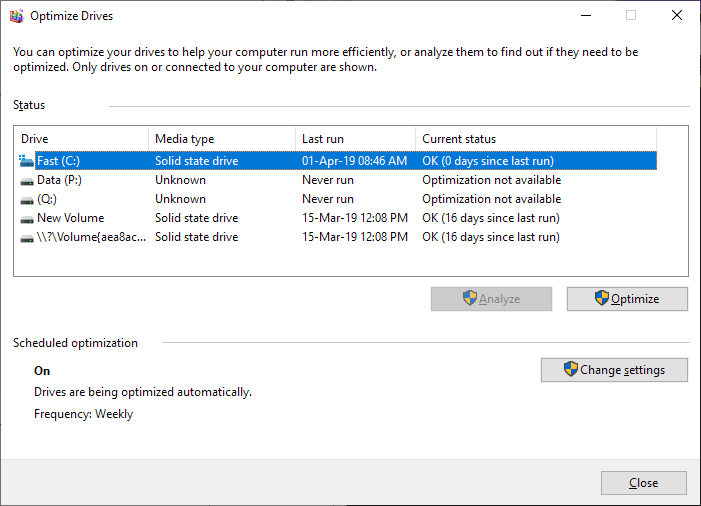
Repeat the steps to optimize all partitions so as to speed up the computer performance. If it's an SSD disk, refer to Optimize SSD Performance for help.
Method 5. Install the Latest Windows Update - New PCs after 2010
Applies to: Computers and laptops that were produced after 2010.
Sometimes, if the new Windows 10 update contains bugs, it will slow down and even freezes computers. Normally, once a serious bug is found, Microsoft will publish new updates to fix the bugs.
So the best way is to install the latest Windows 10 update:
Step 1. Go to Settings, click "Update & Security".
Step 2. Click "Windows Update", select "Check for Updates".
Step 3. Click "Update Now" if a new update is available.
Wait for the computer to download and install a new Windows 10 update.
Method 6. Perform System Restore, Revert to the Previous Version - Old Pcs before 2010
Applies to: Old computers that were produced before 2010, especially Windows XP, Vista, 7.
Sometimes, the reason why your computer is slow after install the new Windows 10 update is that your computer is too old. It's normal that the new Windows 10 operating system cannot run very fast on old computers, especially on Windows 7, Vista, and XP.
So the best way to fix computer slow issue on those old PCs is to perform a system restore, reverting the OS to a previous version:
Step 1. Press Windows + R keys to bring up the Run dialog.
Step 2. Type rstrui.exe and hit Enter to open up System Restore.
Step 3. Select "Choose a different restore point" and click "Next".
Step 4. Select a previous created Windows restore point, click "Next".
Follow on the onscreen instruction to complete the system restore process.
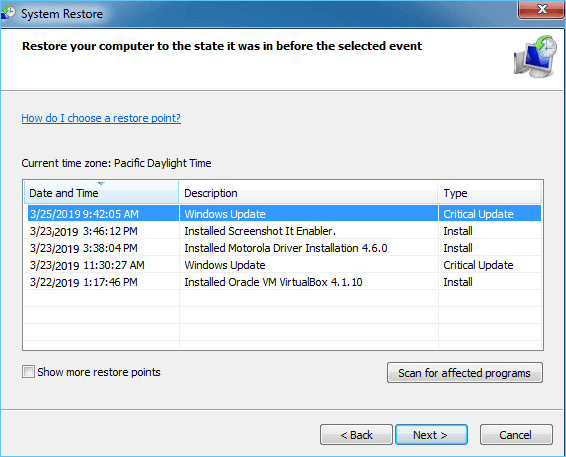
Conclusion
On this page, we explained why the computer slows down after Windows 10 update and how to fix Windows 10 slow down computer performance issue with 6 powerful methods.
Mostly, low C drive disk space and the Windows update caches are the top two factors that stop your computer from running fast. Therefore, when your computer becomes slow after installing new Windows 10 update, extending C drive and clear Windows update cache will do most of the jobs.
If you still have some questions on Windows 10 computer slow down, check the answers below. You may get a clue.
People Also Ask About PC Slow after Windows 10 Update
1. Why is my Windows 10 upgrade taking so long?
Usually, Windows 10 updates will take 30 minutes to 1 hour or even longer. The reason why it takes so long is that the bigger the update is, the larger files and features will be added to the system.
Also, to optimize Windows performance and fix bugs, the larger system file will be. As a result, it will take a while for the computer to download and install the update.
2. Why is my laptop so slow?
There are many reasons that will make your laptop slow. Here is a lost of common reasons that will cause your laptop slow:
- The dust inside your laptop
- Malware or virus infection
- Very slow startup
- Low disk space
- Outdated or failing hardware
- Windows update problems
So how to fix this issue? You may refer to Lenovo Laptop Running Slow for help.
3. Windows 10 suddenly slow, how to fix?
When your Windows 10 computer suddenly slows down, don't worry. Here is a list of all practical fixes that you can try so to speed up the PC:
- Reboot computer
- Scan for malware and virus
- Close background programs
- Install Windows update
- Delete temp files
- Free up Windows disk
- Increase C drive
- ...
For a step-by-step guide, please follow Windows 10 Slow Suddenly for a try.
Was This Page Helpful?
Daisy is the Senior editor of the writing team for EaseUS. She has been working at EaseUS for over ten years, starting as a technical writer and moving on to being a team leader of the content group. As a professional author for over ten years, she writes a lot to help people overcome their tech troubles.
Written by Tracy King
Tracy became a member of the EaseUS content team in 2013. Being a technical writer for over 10 years, she is enthusiastic about sharing tips to assist readers in resolving complex issues in disk management, file transfer, PC & Mac performance optimization, etc., like an expert.
Related Articles
-
Is Your SSD Slow to Load Games? Here Are New Fixes!
![author icon]() Sherly/Jul 10, 2025
Sherly/Jul 10, 2025 -
Half Sword Save File Location: How to Locate & Backup It
![author icon]() Larissa/Jul 04, 2025
Larissa/Jul 04, 2025 -
How to Transfer Stardew Valley Saves Between Different Devices
![author icon]() Rel/Jul 07, 2025
Rel/Jul 07, 2025 -
How to Fix PS4 Cannot Access System Storage Error Code CE-34335-8
![author icon]() Jean/Jul 10, 2025
Jean/Jul 10, 2025